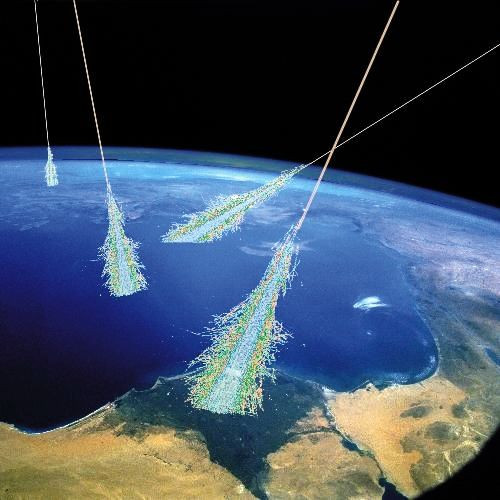Cosmic Rays Trigger Climate Change On Earth By Increasing Cloud Cover: Study

Cosmic rays are streams of very high energy particles in space that stem from activity on high energy stars like the sun. They can also originate in sources beyond our solar system, like exploding stars and distant galaxies. The cosmic rays cause electronic problems in satellites and other space instruments and their effects on the human body are seen as negative, but it is not clear to what extent.
Now, a team of researchers found these ions (charged particles) could filter through our atmosphere and trigger cloud formation, which could have profound effects on the day-to-day climate.
The researchers from the Technical University of Denmark said these cosmic rays could be the reason for several climatic anomalies across Earth's history.
“Finally, we have the last piece of the puzzle explaining how particles from space affect climate on Earth,” said Dr Henrik Svensmark, lead author of the study in a press release on EurekAlret. “It gives an understanding of how changes caused by solar activity or by supernova activity can change climate.”
Cloud condensation nuclei or CCNs are typically 0.2 µm, or 1/100th the size of a normal cloud droplet. This provides the small but precise surface needed for water vapor to settle and become liquid water, which is integral in cloud formation. Water requires a non-gaseous surface to make the transition from a vapor to a liquid. These CCNs are formed by aerosols like smog, haze, fog, dust and smoke.
The team studied the effects of cosmic rays on a simulation of Earth’s atmosphere, recreated inside a cloud chamber, which mimics the planet’s upper atmosphere inside a controlled lab setting where these interactions can be studied up close.
The study showed the high energy particles emitted from several sources knock electrons off air molecules to produce ions, which are positively or negatively charged particles. These ions then interact with even the smallest aerosols in our atmosphere to form CCNs, which causes heavy cloud formation to progress rapidly.
The ions work by integrating water and sulphuric acid together in their fold. These form small clusters that do not evaporate when subjected to sun’s light, making stable CCNs in our upper atmosphere. This process is known as nucleation. As the clusters grow, they attract more water and if they get large enough, they will form clouds.
The study, published in journal nature Communications, also showed the sun’s magnetic activity alters the influx of cosmic rays onto Earth.
The sun does not show too many sun spots when it enters a period of low solar output (measured using TSI values or Total Solar Irradiance). This causes more cosmic rays to enter our atmosphere because when the sun is at high activity, it produces solar storm clouds called coronal mass ejection, which disrupt the highly charged ions from reaching Earth.
During low solar activity, these particles easily reach Earth, causing heavy cloud formation and making the planet’s temperature drop.
Cosmic ray activity was linked to the Medieval Warm Period around 1,000 AD and the Little Ice Age between the 13th and 19th centuries, when London’s River Thames regularly froze during the winter.
Dr Hamish Gordon, from the Institute for Climate and Atmospheric Science at the University of Leeds, United Kingdom, said: “This is an interesting and plausible result, and if it stands up to more detailed scrutiny it may prove an important contribution to aerosol microphysics.”
© Copyright IBTimes 2024. All rights reserved.





















